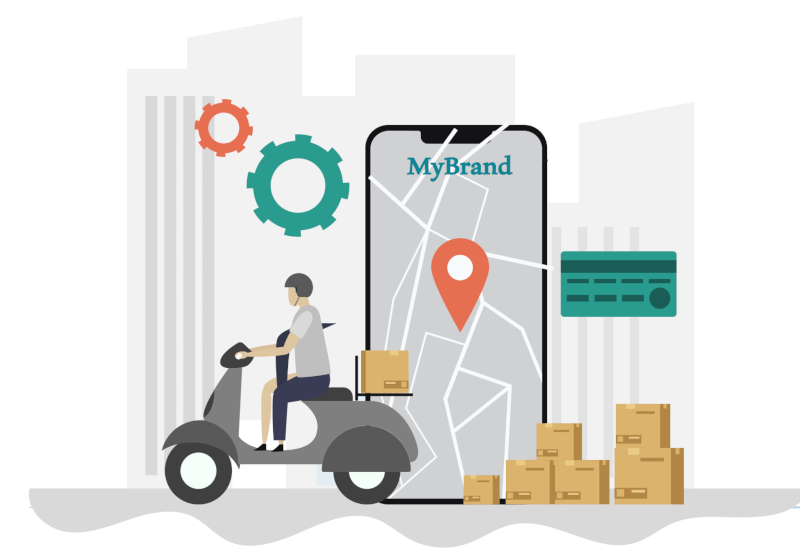18 Mar

With the eCommerce eruption of the last few years, a great deal of focus has been placed on last mile delivery. Shippers and logistics providers are reacting to the changing face of consumer expectations for speed, visibility and convenience in the last mile by investing in real-time tracking and more convenient order fulfillment. Yet despite its similarities with the last mile of delivery, first mile delivery isn’t getting as much attention or resources invested in improving efficiency and visibility. And even less thought has been given to improving the first mile delivery experience and the wider impact that this can have on the overall business.
What is first mile delivery?
Let’s first make a distinction:
First mile delivery refers to the transportation of goods across the first leg of the supply chain. But the first mile could mean different things for different supply chains and industries. For a retailer, this could be delivering items from a regional warehouse to a local distribution center or local stores. For a logistics service provider, this could be a service of picking up goods, and either:
- bringing them back to their own warehouse or station (i.e. the next day/distribution model) before shipping them to the final destination, or
- a same day or on-demand service where the LSPs pick up the order from the shipper, which then go out for immediate delivery to the consignee
For a moving and storage company, for example, the first mile would involve a pickup from the customer’s home or store, and bringing the inventory back to the warehouse or storage site. The same applies with picking up eCommerce shipments and taking them to a distribution center for the next leg of delivery. In both cases, it involves loading and unloading shipments multiple times. It can involve different drivers managing the same items, and items with more than one order ID (which is often resolved manually by many 3pls).
Many ecommerce marketplaces and merchants with an online presence prefer to send their own truck loads to the 3pl’s warehouse, effectively covering the first mile of the delivery process on their own. However, as eCommerce shipments pile up and merchants find themselves rejected by their regular, overwhelmed logistics providers, covering the first mile presents logistics providers with a chance to provide competitive, premium services to more retailers.
Shippers expect a great experience from their personal deliveries – so why not give them the same treatment when their business orders are shipped?
Thanks to the boom in eCommerce and deliveries directly to consumer’s homes, businesses have been paying close attention to the last mile in recent years. Facing fierce competition online, businesses rushed to improve and expand their fulfillment services, overhauling outdated last mile delivery processes. In parallel, nothing moved in the first mile world. The first mile has been largely ignored from the perspective of the delivery experience – in part because there are fewer businesses involved in the first mile than there are customers in last mile delivery.
However, every aspect of the delivery experience plays a part in creating customer stickiness. B2B shippers are also B2C consumers, who order online and get products shipped to their homes. They receive great delivery experiences with their personal deliveries – so why not give them that same level of service when their business orders are shipped? What’s preventing logistics providers from arranging this?
A great customer experience comes down to two things: visibility, choice, and feedback. These three things help businesses gain a customer’s trust, and make them feel that they are at the heart of the logistics process (which they should be!). The first challenge most businesses face is to convince key stakeholders that the same rules apply as in the last mile: the customer experience must be at the center of operations.
Digitization – For many, first mile delivery is a highly manual process – full of phone calls, pen-and-paper tracking, and two-hour time slots. Shippers don’t have options for different times of day – someone needs to stick around for the provider’s truck to come and haul away goods, without any real-time visibility or any predictability as to when the provider will arrive. These processes can be improved by digitizing the first mile delivery flow.
Large companies have technology for optimizing first mile logistics, but may not have the technology to manage the ‘shipping’ experience. Small companies, on the other hand, may need to do a larger transformational process, taking their entire supply chain from manual to efficient digital operations. This can take a great deal of time and more resources than are available.
Visibility. For most shippers, once a provider takes a truckload from its warehouse, there is zero visibility into where the order is. This is particularly problematic for shippers of big and bulky goods, or fragile or expensive items. When these items get lost or delayed in transit, there’s a lot at stake, not the least of which is a delayed customer and reduced satisfaction with your fulfillment service. Lack of first mile tracking is also highly inefficient for the teams managing dispatching.
Tracking and visibility is one example of how the last mile delivery experience starts with the first mile of delivery. To offer competitive services to shippers, it’s important to look at the delivery experience from the shipper’s perspective as well as the end customer’s, starting with the first mile.
Today, it’s possible to update your first mile shipping and first mile delivery experience using many of the same techniques that are applied to last mile delivery.



